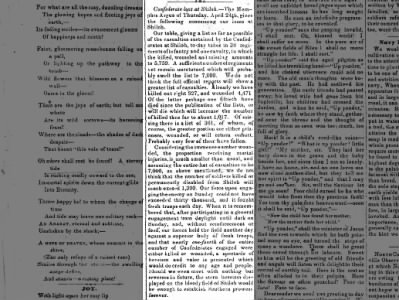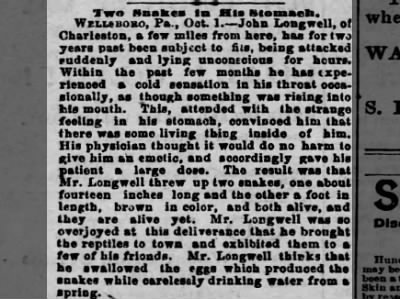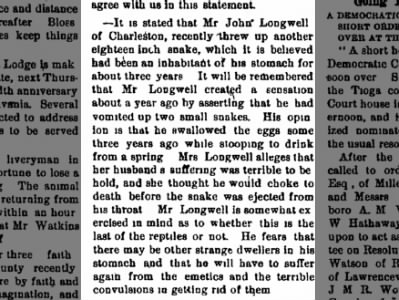Randy has posted another Saturday Night Genealogy Fun challenge. This week we are looking at Sarah's in our database with 'last names unknown' or LNU. I'm going to summarize the rules this time:
Basically, search your database and see how many females you have with the first name of "Sarah" where you don't know the last name. Then, do a little research and see if you can discover her maiden name. If you don't have any Sarah's, feel free to use a different first name. Then, post your findings!
So, here goes!
I have two Sarah's, but they are such distant relatives that I decided to chose a different name. So, I'm going with Ann. I found six Ann's and was able to discover the maiden name of one of these... which I'll share at the end.
1. Ann (abt 1762-aft 1809), who married Charles BOOKOUT, is my 5th great grandmother. The only record I have for her is her husband's will from 1809 in Wayne County, Kentucky that lists his wife, Ann, and four children: John, Mary, Benjamin and Joseph.
2. Ann, who married Jno. THOMPSON, is the mother-in-law of my 4th great grandfather, Joseph EASTWOOD (1773-1844), through his first wife. She lived in England in the 1700's.
3. Ann (?-1827), who married Nicholas QUIGLEY (abt 1740 in PA - abt 1810 in Clinton Co, PA) the son of Christian QUIGLEY (see #4), is the wife of my 5th great grand uncle. The only record I have for her is a SAR (Sons of American Revolution) application from 1945. Now that I look at it again, it says her father is Gayen MILLER. So, I need to see if I can verify that her last name is MILLER.
4. Ann, who married Christian QUIGLEY, is my 6th great grandmother.The only record I have for her is also the SAR application from 1945. It says that there were married about 1750. The application says he served directly under General Washington. (His son, Michael QUIGLEY (1748-1804) is the Patriot through which I joined DAR two years ago.)
5. Anna M (abt 1871-?), who married Charles M QUIGLEY, is my second cousin four times removed. I have her in the 1920 and 1930 censuses.
6. Anna/Annie M (1836-bef 1910), who married Adam Close McCLINTOCK, is the wife of my 3rd great grand uncle. I have her in the 1870, 1880 & 1900 censuses in Clinton County, Pennsylvania. Her husband is a widower in the 1910 census.
.jpg) |
| Pennsylvania Death Certificate of Anna M (Bickle) McClintock |
There are a total of 44 McClintick/McClintock/McClintic's listed on FindAGrave in that cemetery and I'm going to make sure I have them all accounted for! Also, I need to make sure I have all of their death certificates if they died between 1906-1944. "My" Ann is not currently listed, so I will add her.
The Ann I had the most success with was #6. Ancestry showed a hint listing a death record, and it was hers. The informant is her husband, A C McCLINTOCK. It lists her parents as John BICKLE (so, that's her maiden name!) and Catharine DUKES. I also got her birthdate (20 Feb 1838), date of death 07 May 1909), and burial place (Cedar Hill Cemetery, Mackeyville, Clinton County, PA). I then found her parents in the 1860 census when she would've been 22, but she's not with her family. I think it is likely this was a second marriage for her as she was about 30 years old when she married Adam. I couldn't find her parents in 1850.
Do we share common ancestors? I'd love to talk! Please write me at drleeds@sbcglobal.net
The Ann I had the most success with was #6. Ancestry showed a hint listing a death record, and it was hers. The informant is her husband, A C McCLINTOCK. It lists her parents as John BICKLE (so, that's her maiden name!) and Catharine DUKES. I also got her birthdate (20 Feb 1838), date of death 07 May 1909), and burial place (Cedar Hill Cemetery, Mackeyville, Clinton County, PA). I then found her parents in the 1860 census when she would've been 22, but she's not with her family. I think it is likely this was a second marriage for her as she was about 30 years old when she married Adam. I couldn't find her parents in 1850.
Do we share common ancestors? I'd love to talk! Please write me at drleeds@sbcglobal.net




.jpg)











.jpg)




.jpg)
.jpg)


.jpg)
.jpg)
.jpg)
+pg+1.jpg)
+pg+2.jpg)
+pg+3.jpg)



